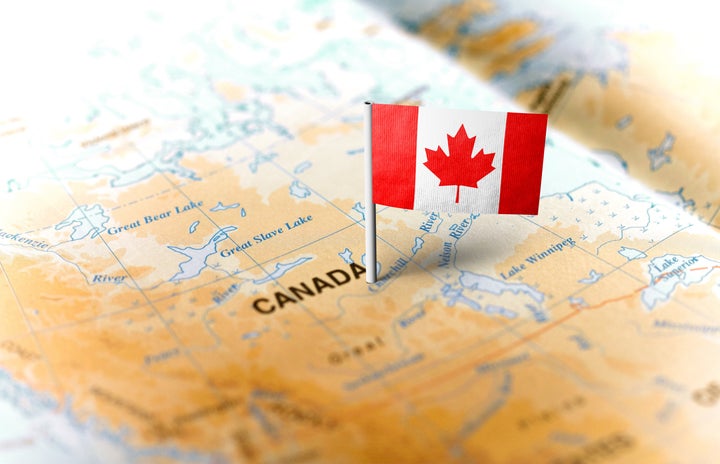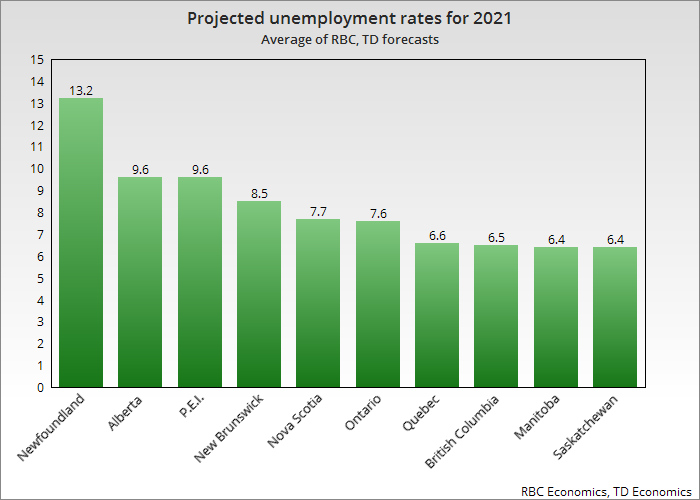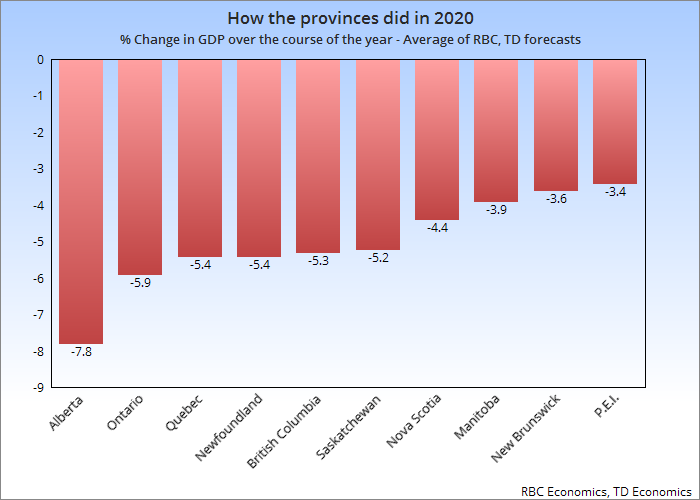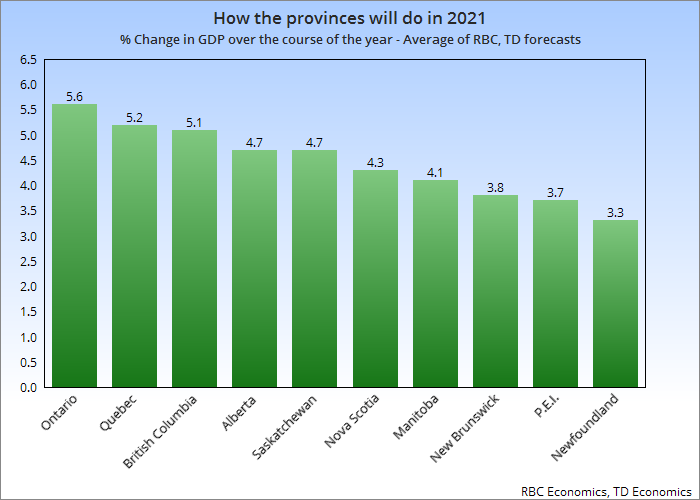
Two of Canada’s most important economic engines ― Ontario and Alberta ― struggled more than others through the 2020 crisis year, but will make up for much of it in 2021, new economic forecasts predict.
All the same, Ontario will see an elevated unemployment rate of around 7.5 per cent through 2021, near or higher than the national average, economists at Royal Bank of Canada and TD Bank predicted in recent reports.
But that will pale in comparison to Alberta’s projected unemployment rate around 9.5 per cent jobless rate, topped only by that of another oil-producing province, Newfoundland and Labrador, in the range of 12.5 to 13.8 per cent, depending on the forecast.
By comparison, British Columbia, Manitoba, Saskatchewan and Quebec are all forecast to have jobless rates below 7 per cent next year, in both the RBC and TD forecasts.

Alberta has seen the biggest pandemic-related hit to its economy of any province, with output some 8 per cent smaller than it was at the start of the year, according to the RBC and TD forecasts.
Ontario also got hit harder than average, thanks to shutdowns in its auto industry this past spring. But an expected boom in investment by the Detroit big three automakers next year will help push Ontario’s economic growth to the fastest of any province, economists at TD Bank wrote.


In the short term, with a new round of pandemic lockdowns shuttering businesses, “we anticipate that Ontario’s employment recovery… will effectively stall,” the TD economists wrote.
The “double whammy” of the pandemic and an oil price crash will leave “scars for years” on Alberta’s economy, RBC economists wrote in their forecast.
“While we expect the situation to improve meaningfully in 2021 with a 4.5 per cent growth, the road will be long. In fact, we believe it could take until 2023 to entirely reverse 2020’s damage,” the RBC economists wrote.
Watch: Winners and losers: What a Biden presidency will mean for Canada’s economy. Story continues below.
The province will also face a “daunting task” getting its finances in order, RBC said, after it posted a budget deficit of 7 per cent this fiscal year, the largest of any province.
Compared to the rest of the country, Canada’s eastern provinces had a good year, economically. The “Atlantic bubble” they formed kept the coronavirus case counts comparatively low and economic activity high, minimizing the damage.
With less ground to make up next year, the Atlantic provinces will see somewhat slower economic growth than the regions that got hit hardest this year, the forecasts showed.
In most parts of the country, the economy won’t return to pre-pandemic levels until at least 2022, the forecasts showed.
“We project 2021 activity to come short of 2019 levels in all but two provinces—Manitoba and Prince Edward Island,” the RBC report stated.
“The continuing drag of hard-hit industries (including accommodation and food services, arts and entertainment, and transportation services) will keep the recovery incomplete until 2022 in most cases.”